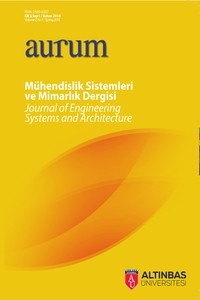IRAKTAKI OKULLAR IÇIN, WEB TABANLI EV ÖDEVI İZLEME SISTEMI GELIŞTIRME
WWW, eğitimi ve yaşantımızı pek çok yönden etkilemektedir. Günümüzde, web tabanlı ödev birçok ülkede yaygınlaşmıştır. Gelişmekte olan bilgi teknolojilerinde web tabanlı ödev sistemlerinin el ile yapılan (kağıt –kalem kullanılarak) ödevlere kıyasla pek çok avantajı vardır. Web tabanlı ödev sistemlerinin kullanılması öğretmenlerin çalışmalarını kolaylaştırır, öğrencilere rahatlık sağlar ve ebeveynlerin çocuklarının durumunun farkına varmasını sağlar. Bu çalışmanın amacı, Irak okulları için yeni bir web tabanlı ödev sistemi (TPS öğretmen ebeveyninin öğrenci sistemi) oluşturmaktır. Bu sistem üç bölüme ayrılmıştır. İlk bölüm öğretmenler içindir, öğretmen ödev hazırlayabilir, dersi görselleştirmek için için video yükleyebilir, ödevle ilgili sohbet ederek öğrencilerin sorularını anlayabilir ve öğretmen öğrenci performansı ile ilgili raporları görebilir. İkinci bölüm öğrenciler içindir, öğrenci arayüz aracılığıyla soruları cevaplayabilir ve sonucu hemen görebilir. Üçüncü bölüm ebeveynler içindir, ebeveynler çocuklarının performanslarıyla ilgili raporlar alarak çocuklarını takip edebilir. Önyazılım (bootstrap), TPS sistemi için web sayfaları tasarlama amacıyla framework(çerçeve) gibi kullanılan JavaScript, HTML, CSS dillerini içerir. Programlama işlemi, PHP dili ve veritabanı olarak MySQL kullanılmıştır.
Anahtar Kelimeler:
İzleme, TPS, Web tabanlı sistemler
TPS: DEVELOPING A WEB BASED HOMEWORK MONITORING SYSTEM (TEACHER, PARENTS, STUDENT) FOR IRAQI SCHOOLS
The world wide web affects education and our live in many ways. Nowadays, web-based homework has become widespread in several countries. Web-based homework systems in developing information technologies have many advantages compared to paper-pencil homework. The use of web-based homework systems eases the work of teachers, provides comfort to students, and ensures that parents are aware of their children’s situation. The aim of this study a new web-based homework system created (TPS teacher parent’s student system) produce for Iraq schools. This system is divided into three sections. The first section is for teachers, teacher can create homework, upload video to illustrate lesson, receives question from students through the chat about the homework and the teacher can see a report of student performance. The second section is for students, student can answer questions through the interface and can see the result immediately. Third section is for parents, parents can follow their children by receiving reports about their children performance. Bootstrap contains JavaScript, HTML, CSS used as a framework to design web pages for TPS system. The programming process used PHP language and MySQL as a database.
Keywords:
Monitoring, TPS Web-Based Systems, İzleme, Web tabanlı sistemler,
___
- Page, T. (2014). Application-based mobile devices in design education. International Journal of Mobile Learning and Organisation, 8(2), 96-111.
- Smolira, J. C. (2008). Student perceptions of online homework in introductory finance courses. Journal of Education for Business, 84(2), 90-95.
- https://www.wileyplus.com/about/impact-studies.html
- Wieder, B. (2011). iPads could hinder teaching, professors say. Chronicle of Higher Education, 57(28), A22-A23. Retrieved from http://chronicle.com/article/ iPads-for-College-Classrooms-/126681/
- Zurcher, D. M., Phadke, S., Coppola, B. P., & McNeil, A. J. (2016). Using Student-Generated Instructional Materials in an e-Homework Platform. Journal of Chemical Education, 93(11), 1871-1878.
- Fatemi, D. J., Marquis, L., & Wasan, S. (2015). Student performance in intermediate accounting: A comparison of the effectiveness of online and manual homework assignments. The Accounting Educators’ Journal, 24.
- Richards-Babb, M., Drelick, J., Henry, Z., & Robertson-Honecker, J. (2011). Online homework, help or hindrance? What students think and how they perform. Journal of College Science Teaching, 40(4), 81.
- Demirci, N. (2010). The effect of web-based homework on university students’ physics achievements. TOJET: The Turkish Online Journal of Educational Technology, 9(4).
- Husbands, C. (2011). Facilitating effective student learning through teacher research and innovation.
- Grieve, R., Padgett, C. R., & Moffitt, R. L. (2016). Assignments 2.0: The role of social presence and computer attitudes in student preferences for online versus offline marking. The Internet and Higher Education, 28, 8-16.
- Bridge, P., & Appleyard, R. (2008). A comparison of electronic and paper‐based assignment submission and feedback. British Journal of Educational Technology, 39(4), 644-650.
- Erdoğan, T., Yıldırım, O. G., & Çiğdem, H. (2017). The Investigation of the Usability of Web-Based Assignment System.
- Burke, C., & Grosvenor, I. (2015). The School I’d Like: Revisited: Children and Young People’s Reflections on an Education for the 21st Century. Routledge.
- National Research Council. (2013). Education for life and work: Developing transferable knowledge and skills in the 21st century. National Academies Press.
- Griesemer, J. A. (2012). Using social media to enhance students’ learning experiences. Quality approaches in higher education, 3(1), 8-11.
- Kuhlthau, C. C., Maniotes, L. K., & Caspari, A. K. (2015). Guided Inquiry: Learning in the 21st Century: Learning in the 21st Century. ABC-CLIO.
- https://help.blackboard.com/Edline/Teacher/My_Class_Page_Content/Homework_Online_Quizzes_ and_Assignments Chua-Chow, Chauncey and McKessock (2011)
- Hsu, S. (1998, November). HWSAM: a Web-based automated homework submission system. In Frontiers in Education Conference, 1998. FIE’98. 28th Annual (Vol. 2, pp. 580-582). IEEE.
- http://www.webassign.net/how_it_works/
- Grieve, R., Padgett, C. R., & Moffitt, R. L. (2016). Assignments 2.0: The role of social presence and computer attitudes in student preferences for online versus offline marking. The Internet and Higher Education, 28, 8-16.
- Yasir Chaudhry, M., & Malik, A. (2014). Intersection of Pedagogy and Emerging Technologies to Enhance Student-Centred Learning in Higher Education. Pakistan Journal of Social Sciences (PJSS), 34(2).
- Irby, D. R. (2017). Middle School Student and Teacher Perceptions About the Effectiveness of the Technology Integration in the Classroom.
- ISSN: 2564-6397
- Yayın Aralığı: Yılda 2 Sayı
- Başlangıç: 2017
- Yayıncı: Altınbaş Üniversitesi
